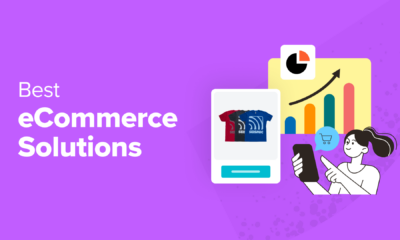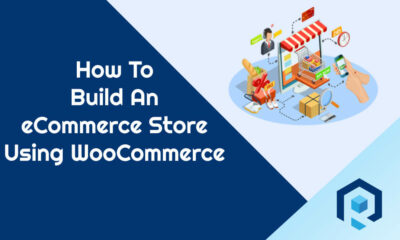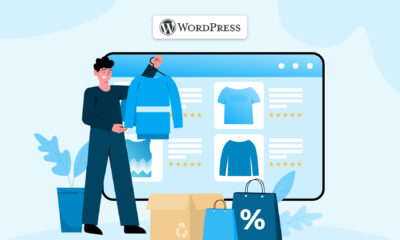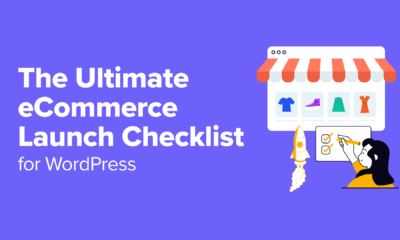MARKETING
Planning Vs. Reality – 5 Typical Ecommerce Positioning Challenges

Few industries have as much potential for success as online sales, but successful eCommerce positioning can be challenging when your plans don’t match reality.
You know exactly what that means because you’ve seen it already. It’s the LinkedIn ad that has nothing to do with your job or the tech you use. Or it’s a fad diet supplement on Instagram when you’re really after those futuristic earrings or the latest kicks held up by your favorite sneakerhead. Getting positioning right means it’s easier to understand your market and get those ads and drip campaigns right.
It sets the tone, ensures you’ve got the right audience, and helps execution turn into conversions. Your business deserves that, so here are five common positioning challenges and how your reality might look different.
Awareness: Your business and the hungry market
The first step in most customer value journeys is building awareness of your products and brand. You’re doing a lot of heavy lifting in the eCommerce space. By not being in traditional retail and competing with brands around the world, you’re the top advocate for your products and the best place for people to learn about you.
When facing that, many companies come out with a core plan. They say: I’ll target a hungry market that wants exactly what I’m selling because everyone is always shopping online!
The reality is that it’s hard to find a hungry market, and customers may be buying a lot online, but they’re not shopping in many different places. Your best audience is out there, and they are hungry, but you will have to research and find them. Then, you place your message in front of them. This can happen in a variety of ways and one of the most advertised options is buying lists. Unfortunately, there’s so much data available that it can be hard to get started with a reasonable and narrow target.
Addressing this positioning challenge starts with a review of the current market. Look at competitors and brands that you like that are successful. If your product is in a new category or you have a specific position you haven’t seen elsewhere, look for similar approaches in other market segments. Focus research on where potential shoppers are. For those of you with established brands looking to rekindle interest or gain new markets, slim down where you A/B test to ensure you’ve got reliable attribution.
Awareness is an immediate need and something worth a long-term investment. Look for ways to solve specific issues for your customers today and showcase yourself as a reliable, long-term alternative. Tackle the bigger emotional hooks behind what you offer — improving relationships or giving people back their free time instead of accomplishing a specific task — so that you’re not trying to fit a narrow product-and-problem niche.

Become A Certified E-Commerce Marketing Master
The Industry’s Most Comprehensive E-Commerce Marketing Certification For The Modern Marketer. Turn Products Into Profit, Browsers Into Buyers, & Past Purchasers Into Life-Long Customers By Copying This Proven Marketing Method Developed By The Top E-Com Mavericks In The Game Today.
Conversion strategy: Leaning on promotional support
After people know about you and can find you, it’s time to start selling. That’s the bulk of an eCommerce business’s operations, and most plan on letting their products speak for themselves. I mean, you make a great product, and people should be able to recognize that immediately, right?
In reality, not so much.
ECommerce is crowded, and there’s a lot of differentiation that needs to happen to promote your products to generate leads and sales. This work includes how you show off your products as well as the broader offers your store makes. If your product is better, but a competitor has a more compelling offer, you may still lose out on the sale. You need messaging that resonates with your audience and keeps them engaged. Even if someone doesn’t convert when they see your first message or content, it can put you top-of-mind for when they are willing to buy.
Where should you start? Create relevant offers for your different audiences. Target people with something they could use or enjoy. Be sure to consider their budget and initial offers that may get your foot in the door for a repeat purchase. Here are some elements to remember:
- Free offers need to provide value and answer questions or propose problems to solve.
- Provide your audience a low-risk option if your business thrives on repeat purchases.
- Explain why someone should take a chance on you.
- Match offers to the perceived value. If you’re selling coffee and don’t want to make a free offer or a $10 bag, be sure that the big package you sell for $90 feels like it is worth much more.
- Help your audience feel like they “get their money’s worth” at every step
Create a few core offers and promote these everywhere. That way, your audience gets what they need no matter how they find you, and no one feels upset for using the banner discount and not the Facebook one that arrives a week after their purchase because of retargeting. Simplicity is an easy way to keep products flowing and keep shoppers happy.
Subscriptions: Not one-size-fits-all
One of the more common plans any eCommerce company hears today is that everyone offers a subscription, and you should too. In reality, it doesn’t make much sense for every business, and customers don’t want it from every business. Sometimes people just want to buy once and get everything they need without signing up for continual charges on their accounts or credit cards.
You address the subscription question with detailed research into what people want you to offer and what you can offer. Typically, subscriptions require high SKU counts, which comes with a lot of consistent ordering and capital investment. Increasing SKU and inventory count also increase your inbound shipping, warehousing/storage, and fulfillment costs.
The question to ask your business and finance partners is: Will a subscription make up for that?
If the answer is unclear, review potential recurring options and product lifetimes to see where you might have an add-on instead of a consistent replacement. That approach can allow you to create a subscription-like element or feeling without needing a high volume of SKUs.
Here, you would tie a product or option with a specific order number. So, everyone gets the same item in package two regardless of when they sign up for the service. If person A signs up in August, they get the item in September. When person B signs up in December, they get this item in January. You control the flow and don’t have to order high volumes of new SKUs monthly.
Excitement: Not everyone is the ‘fun’ one
Most people getting into the eCommerce space are very excited about their operations and products. They feel customers are going to be just as excited! Positioning often relies on that level of excitement to encourage sales and relationships without necessarily building up that excitement for a novel audience.
But what if you sell something more helpful or relaxing than exciting? What if the biggest feeling is a sense of relief when your package hits the front porch? Or what would you do if a customer doesn’t know you well enough to be excited before they use your product for the first time?
The reality is that your business must make a case to customers unfamiliar with the brand who have limited attention spans, even for a product category they enjoy. The emotions you want to elicit must be created and nurtured across multiple instances. And excitement isn’t always how people react. The market for home delivery of pet food and meals is more than $1.67 billion — while the pups may all be excited, many owners are just glad that the food arrives and they don’t need to rush to the store.
That proves you don’t have to be the “fun” brand to build out an empire. And you can’t force people to view you as the fun brand, anyway. Get to know your company through the eyes of your customers. Start with a hard look at your brand and products. How do existing customers talk about you? How do they talk about your competitors? What do they want that’s different from competitors that you can tackle?
Use those answers to create a difference for your brand. It might be the excitement about being the hot new thing, or you could uncover an angle even more lucrative.
Reviews: Requires more than love
One final area to touch on is how products spread. We’ve all been told for more than a decade that word-of-mouth has better returns than advertising. In the eCommerce space, this translates to reviews being a top way to generate confidence in a product and convert those eyeballs. The trouble can be getting the reviews you need.
Many eCommerce owners will tell themselves, “People will love my product so much that they come back to my website just to fill out our review and comment sections, no matter where I hide those on my site.” So, they add whatever integration or toolkit is native to their eCommerce platform that comes up first in the plug-in search for “reviews.”
Those elements get stuck on a page randomly, and then the mission accomplished banner is hung.
Maybe you get lucky, and the right comments live next to your products in an easy-to-use menu. Or you get it wrong, and money flows down the drain because no one can find or understand the 12-star review platform.

Get the Digital Marketing Blueprint…
With a Customer Value Journey that strategically builds a relationship with new prospects and converts them into loyal, repeat customers. Click here
Reviews are golden for eCommerce because they can drive conversions and give you shareable quotes. You also get feedback for what isn’t working (just as important). Generating reviews, however, takes a plan. People are willing to provide reviews, but you’ve got to ask and make it easy for people to answer. Here are a few things to help.
First, put reviews on product pages and ensure the platform is understandable at a glance. Let people leave detailed items, rate by stars, or even add photos. Don’t make a system that’s too cumbersome or asks for details people don’t want to use. Requiring a registered account could prevent people from leaving their thoughts.
When you ask, make sure it is at an appropriate time. The post-sale follow-up should occur after people have received your product and when they’ve had enough time to try it. Use the same channels that your other interactions followed — so if you sent confirmation and shipping status via text, use text to ask for a review. You may also want to try different review types. If someone bought your product via Instagram, consider asking for a post or comment. That might drive more people to your sales channels and yield better conversions than a review on your website.
The trick here is to keep asking your newest buyers and test different options to see what increases the number of reviews you receive and where these reviews best impact conversions.
Your follow-up
ECommerce businesses are primarily marketing and sales machines. This will take up much more of your team’s time than product development, procurement, and fulfillment. That means positioning is at the heart of your success. While we’ve looked at common concerns around emotions, reviews, sales options, and chasing the subscription wave, those are only the first steps to help you succeed throughout the Customer Value Journey.
This framework will help you craft a plan based on your business and current capabilities. ECommerce is exciting. The tools that allow you to sell and succeed are fascinating. Use that potential to create something amazing to drive you forward with a purpose. Your bottom line will thank you.




















You must be logged in to post a comment Login